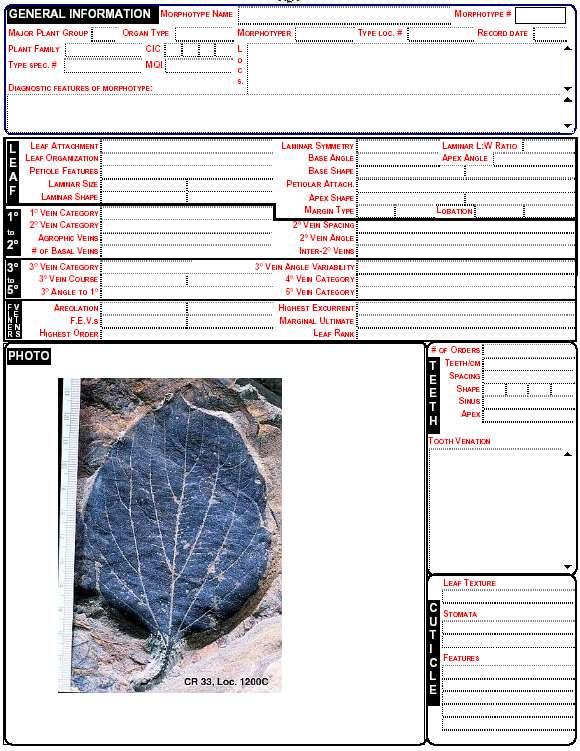
For more on the morphotyping process, please see the Manual of Leaf Architecture.
In the "Image Gallery", you will find many images of the fossil leaves we are recovering from the Castle Rock Fossil Rainforest. However, very few of them are identified in the picture captions. Why is this? Castle Rock has been a treasure of new species - in fact, it is believed that most of the specimens are new to science. So, they do not have formal scientific names. In many cases, all we can say about a leaf is that it's a dicot or maybe that it falls in the family Platanaceae or Lauraceae. As reported in the journal SCIENCE of previous excavations,"We collected leaf specimens between 1994 and 1999 from five separate quarries. The flora contains 104 morphotypes: 96 dicotyledons (90 leaf types and 6 fruit types), 3 ferns, 3 cycads, and 2 conifers. Most of the species of dicotyledonous leaves are new to science but include recognizable families such as Platanaceae, Lauraceae, Elaeocarpaceae, Tiliaceae, Sterculiaceae, and Urticaceae." [1]Sometimes, in the quarry, we will refer to frequently uncovered leaves by a name. For example, we find one specimen and casually refer to it as 'another arctocarpus', but it isn't a true arctocarpus. Some are known and have been identified. See this link of images at the museum.Manual of Leaf Architecture
The team is currently doing morphotype identification of the leaves using the Manual of Leaf Architecture published by the Smithsonian Institution. Unique specimens are identified using the techniques in this manual.
Morphotype Concept
A morphotype is an informal categorization of fossil leaves based on architectural features such as its primary and secondary veins, tip (apex) and edges (margins). As described in the Manual of Leaf Architecture,
"A morphotype is an informal taxonomic category independent of the Linnaean system of nomenclature. The morphotype system outlined in this manual was first used by Johnson (1989), who created explicitly defined categories of fossil leaves based on architectural features that could be used for stratigraphic and paleoecological studies without having to resolve the botanical and nomenclatural status of each leaf type. Although many or most leaf morphotypes are probably equivalent to biological species, morphotypes are more narrowly circumscribed by their form and should not be considered as exact species equivalents." [2]The fossil leaves are given a locality number and prepared in the lab so important features may be easily viewed. A morphotype prefix is chosen for the locality. In our case, this prefix is "CR" for Castle Rock. The leaves are sorted into groups all sharing common architectural features. Then, the best specimen in each group is selected as the "holomorphotype". This specimen will be assigned a unique, sequential morphotype number which includes the locality prefix. So, our first morphotype was "CR001". Because the Castle Rock is the richest fossil plant site known from this time, we currently have well over 100 morphotypes. With new species, that is probably all we can call them by without years of research and publications to formally name them.Morphotyping Considerations
For each morphotype, a large amount of information is diagnosed and recorded in a morphotype database. This information is shown below.
For more on the morphotyping process, please see the Manual of Leaf Architecture.
References:
1. Kirk R. Johnson and Beth Ellis, "A Tropical Rainforest in Colorado 1.4 Million Years After the Cretaceous-Tertiary Boundary", SCIENCE Vol 296, 28 June 2002.
2. Manual of Leaf Architecture - morphological description and categorization of dicotyledonous and net-veined monocotyledonous angiosperms by Leaf Architecture Working Group., 1999, Published and distributed by the Leaf Architecture Working Group, 65p. Found online at the Peabody Museum of Natural History.